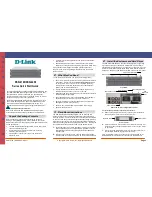
Introduction to the AirLink RV55
Rev. 1 June 2019
13
41113042
Sample Power Consumption Scenarios
Note: All power consumption figures are preliminary.
Table 1-2: Power Consumption Scenarios
Scenario
Radio
Ethernet
Serial
USB
GNSS
Processor
Power
Saving
Mode
LED
Power
Saving
Mode
Power
a
Standby Mode
—
—
—
—
—
—
—
38 mW
(3.14 mA)
Low Power —
Serial
Idle
Attached
Disabled
Enabled
Disabled
Disabled
Enabled
Enabled
834 mW
(68.8 mA)
Low Power —
Ethernet
Idle
Attached
10 BaseT
Full duplex
Disabled Disabled
Disabled
Enabled
Enabled
874 mW
(72.2 mA)
Low Power —
Wi-Fi
b
Idle
Attached
Disabled
Disabled Disabled
Disabled
Enabled
Enabled
1.295 W
(107 mA)
Typical
without Power
Saving
Features
Attached
and
connected
(+20 dBm
LTE)
100 BaseT
Full duplex
Enabled
Idle
Enabled
Idle
Enabled
Active
antenna
Disabled
Disabled
3700 mW
(308.3 mA)
Maximum
without Power
Saving
Features
Attached
and
connected
(+23 dBm
LTE-A)
1000
BaseT Full
duplex
(maximum
throughput)
Enabled
Enabled
Enabled
Active
antenna
Disabled
Disabled
5500 mW
(458.3 mA)
Peak without
Power Saving
Features
c
Attached
and
connected
(+32 dBm
1 up/
1 down
GSM/
GPRS/
EDGE
bursts)
1000
BaseT Full
duplex
(maximum
throughput)
Enabled
Enabled
Enabled
Active
antenna
Disabled
Disabled
8000 mW
(666.6 mA)
Inrush Current
1.5 A @ 12 V (Averaged over 100
s)
a. Power consumption was measured at 12 V.
b. Wi-Fi A and B set up as access points with nothing connected to them.
c. Peak without power saving is similar to Maximum without power saving, but measured as a maximum burst over a limited time.














































